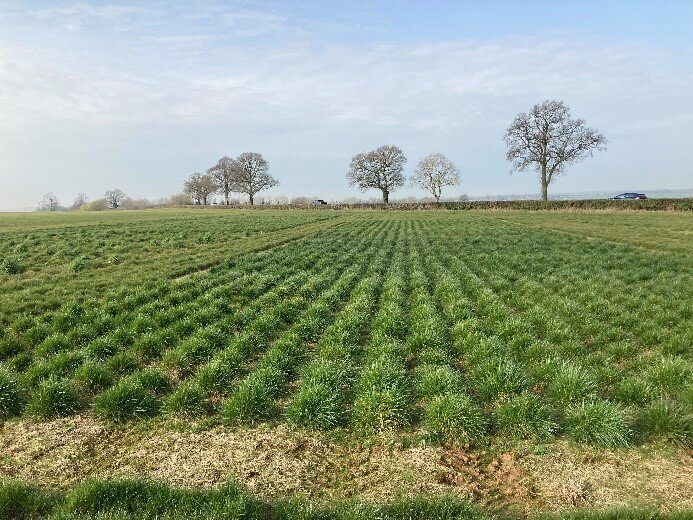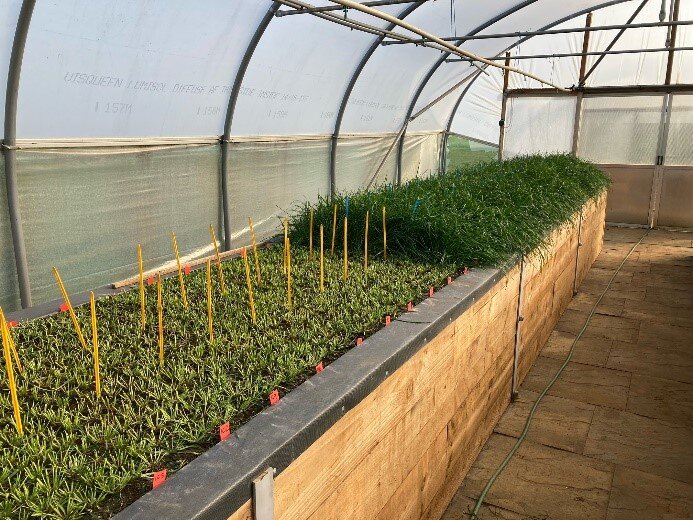Many plant breeding schemes incorporate evaluation of single plants at an early stage for selection in highly heritable traits such as disease tolerance, in grasses this in often in a spaced plant nursery as in Figure 1. In this particular nursery 6,000 young perennial rye grass plants were transplanted before the winter of 2021-2022 in a grid pattern of exactly 50cm by 50cm so that we can evaluate the plants several times throughout the growing season and know the history of each and every candidate in the nursery. This springtime we’ll be looking at the whole plant shape, leaf shape and colour before heading begins in May/June. There is also a score of density and growth for yield performance indication.
However this is not how grass is grown on-farm and so in parallel to our typical wide-spacing nursery we run a close-spacing nursery (Figure 2). Here the material is planted in a grid pattern of 6cm in a replicated trial design. The particular wooden growing bed in Figure 2 can accommodate 3,200 plants in evaluation and clearly in a smaller space. The breeding lines are cut by hand down to 3cm every three to four weeks up to 9 times and the dry matter biomass of each line measured. This selection method is designed to closely match a rotational grazing system.
Only the plants which are partitioning assimilates such as sugar at the base of the plant where the cow cannot graze are able to regrow fast after cutting and out-compete their close neighbours and weed species. This has the dual benefit of producing high yields quickly and encouraging the grazing animal to eat right down to the base of the plants and make the most use of the space available on the farm. Plant breeders have many tools on our belts to use when developing new varieties, but sometimes it’s worth stopping and shining on a spotlight on how to best utilise the space available.

